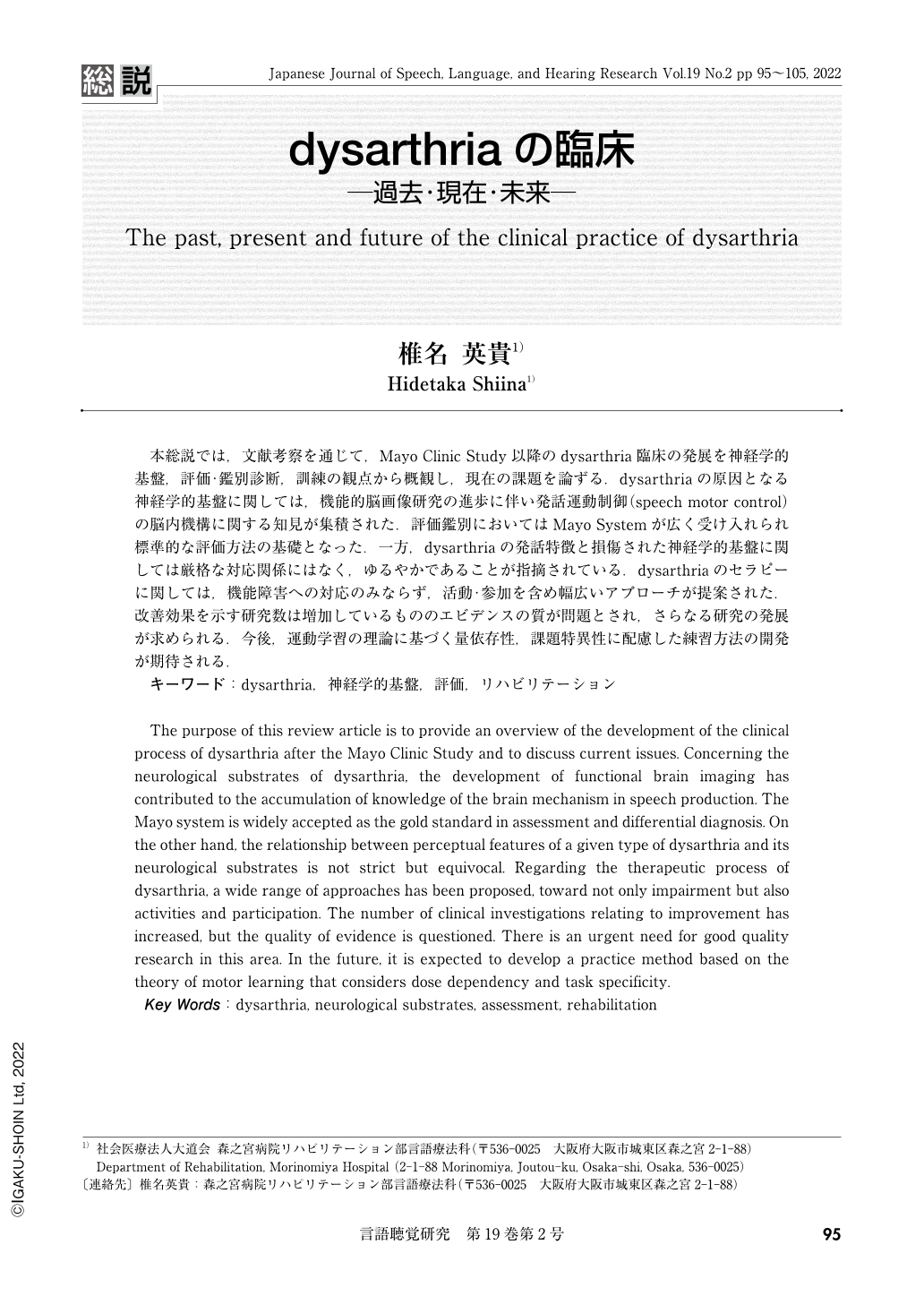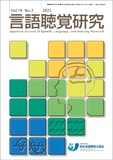Japanese
English
- 有料閲覧
- Abstract 文献概要
- 1ページ目 Look Inside
- 参考文献 Reference
- サイト内被引用 Cited by
本総説では,文献考察を通じて,Mayo Clinic Study以降のdysarthria臨床の発展を神経学的基盤,評価・鑑別診断,訓練の観点から概観し,現在の課題を論ずる.dysarthriaの原因となる神経学的基盤に関しては,機能的脳画像研究の進歩に伴い発話運動制御(speech motor control)の脳内機構に関する知見が集積された.評価鑑別においてはMayo Systemが広く受け入れられ標準的な評価方法の基礎となった.一方,dysarthriaの発話特徴と損傷された神経学的基盤に関しては厳格な対応関係にはなく,ゆるやかであることが指摘されている.dysarthriaのセラピーに関しては,機能障害への対応のみならず,活動・参加を含め幅広いアプローチが提案された.改善効果を示す研究数は増加しているもののエビデンスの質が問題とされ,さらなる研究の発展が求められる.今後,運動学習の理論に基づく量依存性,課題特異性に配慮した練習方法の開発が期待される.
The purpose of this review article is to provide an overview of the development of the clinical process of dysarthria after the Mayo Clinic Study and to discuss current issues. Concerning the neurological substrates of dysarthria, the development of functional brain imaging has contributed to the accumulation of knowledge of the brain mechanism in speech production. The Mayo system is widely accepted as the gold standard in assessment and differential diagnosis. On the other hand, the relationship between perceptual features of a given type of dysarthria and its neurological substrates is not strict but equivocal. Regarding the therapeutic process of dysarthria, a wide range of approaches has been proposed, toward not only impairment but also activities and participation. The number of clinical investigations relating to improvement has increased, but the quality of evidence is questioned. There is an urgent need for good quality research in this area. In the future, it is expected to develop a practice method based on the theory of motor learning that considers dose dependency and task specificity.

Copyright © 2022, Japanese Association of Speech-Language-Hearing Therapists. All rights reserved.


